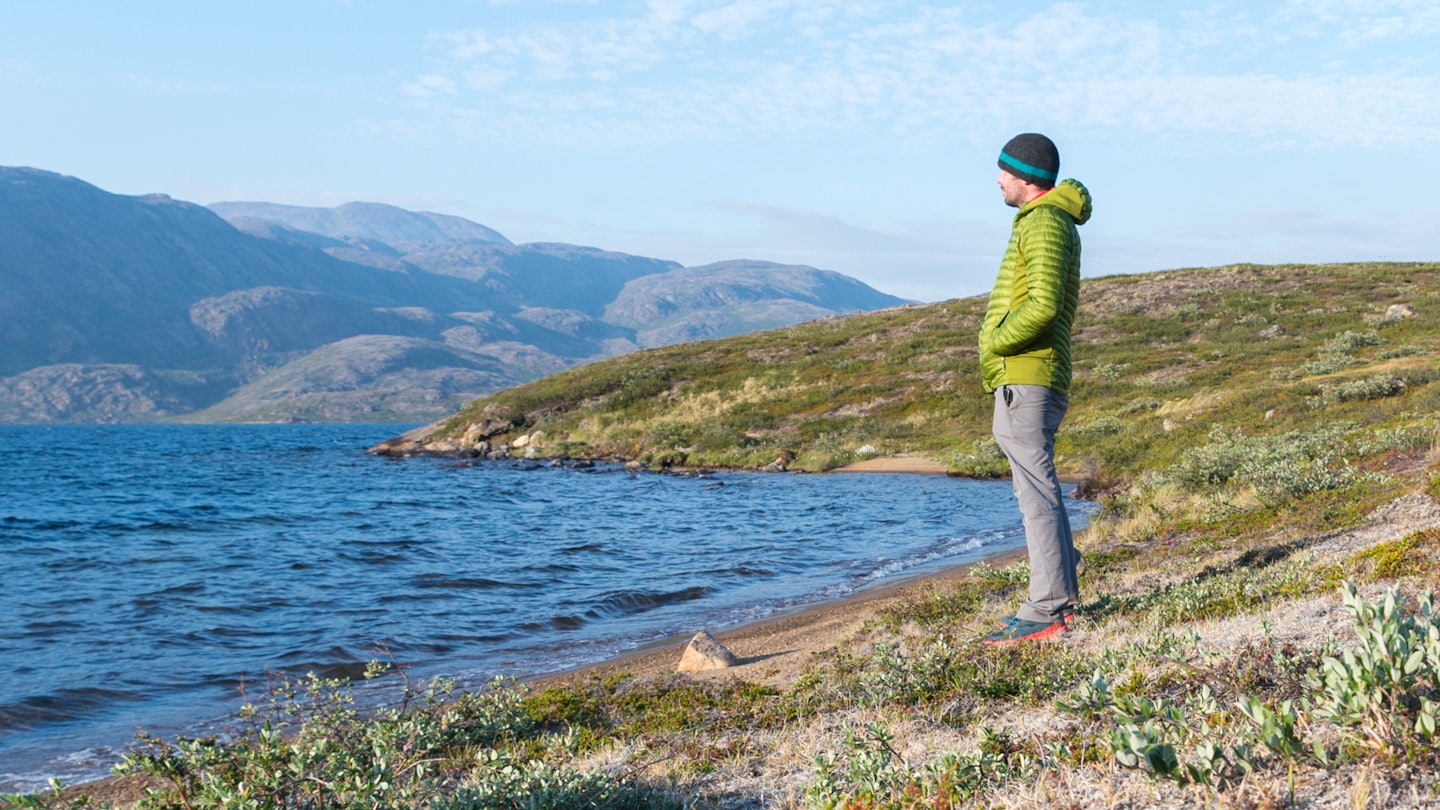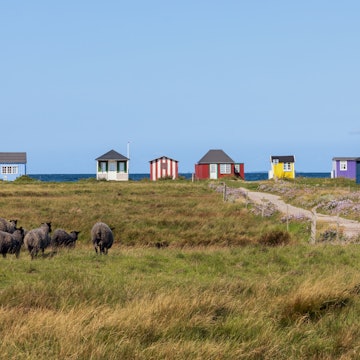

After four days of walking, I reached the halfway point of one of the most remote long-distance hiking trails in the world. It was the furthest I’d ever been from civilisation. The nearest settlements were more than 80km away, I had not spoken to anyone in over 48 hours and I hadn’t seen darkness since leaving home. This was wilderness in its purest, most intense form.

Beyond the ice
Think of Greenland and images of ice, polar bears and emptiness will no doubt spring to mind. In fairness, in a land that’s 80% ice sheet and with a population of just 56,000, this wouldn’t be entirely inaccurate.
In western Greenland, though, lies a stretch of verdant Arctic tundra in one of the largest ice-free areas of the country. Here, the Arctic Circle Trail (ACT), the longest waymarked trail in Greenland, runs from the Arctic desert at Kangerlussuaq to the western seaboard at Sisimiut. It passes through some of the most untamed backcountry on Earth.

Leaving civilisation
I began my trek at Kangerlussuaq where most visitors to Greenland arrive. The initial march out of town follows a dusty road running adjacent to the colossal Kangerlussuaq fjord before branching off into the great Greenlandic wilderness.
Here, the landscape opened up and the dust of Greenland’s Arctic desert was soon forgotten. Before me lay countryside that would become commonplace over the coming days: cairns adorned with reindeer antlers, lush glacial lakes, boulder-strewn moraine and endless green Arctic tundra.

The first day of any long-distance trek is always the hardest. My pack was at its heaviest, the terrain unfamiliar and the narrow, faint trail hard to navigate. However, it wasn’t long before I acclimatised to my new surroundings. I quickly found cairn-spotting and route-finding more straightforward. Recognising the subtle differences in terrain became almost second nature, allowing me more time to enjoy the scenery.
Water was never far away in an area known locally as the ‘land of a hundred lakes’. I spent days walking along the shores of great glacial lakes at the bottom of deep valleys, while in the more mountainous stretches of the trail there were always highland pools to be found.
Although the trail runs through a vast area of montane backcountry, steep ascents are generally short with the track more likely to undulate along the contours of the terrain instead of over high passes and mountain peaks.

Trail life
The trail is usually broken down into hut-to-hut sections, mainly for the purpose of easily identifying start and end points. Trekkers generally cover around 20km a day, either staying in a hut or camping nearby. Invariably, trekkers soon step to their own schedule. I only spent one night in a hut when it was particularly windy.
Life on the trail quickly eased into satisfying routine. As the days passed, my pack lightened and I found my stride. I covered greater distances and slipped into my own routine. I pitched my tent early evening, always close to a lake, and ate my dehydrated trekking meal followed by a chocolate bar and hot drink.
My evenings around my solitary campsite were spent studying the following day’s route and marvelling at the surrounding expanse in silence. The biggest challenge was forcing myself to turn in. At this time of year, the sun never sets above the Arctic Circle so there is no natural bedtime. The lights never go out.

You might also like this: Cool Nuuk: Greenland's burgeoning capital city
Generally, I hiked in the mornings, took a lingering lunch at a hut (a great place to meet other hikers) during the hottest part of the day, before continuing in the cooler afternoons. The huts are basic, unstaffed affairs, usually with bunk beds sleeping up to six. They are all positioned near lakes replete with stunning views.
There is a section of the trek where it’s possible to canoe along Amitsorsuaq Lake, depending on the availability of canoes at the huts bookending the lake.
There is some wildlife to be found en route, although spotting it in the vast Arctic landscape can be challenging. Reindeer are most commonplace and the easiest to observe. Muskox as well as Arctic foxes and hares can also be seen, but fortunately it’s highly unusual to see a polar bear.

You might also like this: On the trail of the muskox in Greenland’s great wilderness
People don’t come to the Arctic Circle to socialise, so solo hikers best be comfortable with their own company. I didn’t meet any groups of hikers, only lone walkers or couples. It is this isolation, remoteness, dare I say even loneliness, that makes the ACT so alluring. When I returned to civilisation, the busy streets and the hum of traffic came as a shock after so many days in the silent wilderness.
There is something elemental about truly disconnecting from the world. A pilgrimage through Greenland’s hinterland is like no other. It has the ability to calm, heal and provide a sense of peace so rarely found in our intimately connected society.
There, on the fringes of the known world, I was reminded of the power of nature: its vastness, resilience and benevolence.

Practicalities
The Arctic Circle Trail in numbers:
165km (103 miles)
7-10 days of trekking
40-50km north of the Arctic Circle, Western Greenland
4105m (13,465ft) of ascent/descent
1500 (approx) people complete the trail annually
When to go: The ACT is essentially a summer trail, with June to August offering higher temperatures, more consistent weather and longer days (never-ending at times). Nevertheless, trekkers must be prepared for all types of weather.
Preparation: The ACT is only suitable for experienced trekkers. It is a long-distance remote trek, so appropriate training and preparation is essential. Trekkers must be confident carrying a heavy pack for extended periods with all their own food, supplies and equipment.
Outside support on the trail is highly unlikely. There is no mobile coverage throughout so trekkers should familiarise themselves with all routes and carry the relevant maps and an emergency beacon or satellite phone in case of poor weather or indeed wildfires which are an increasing phenomenon in the region. The year 2019 saw a record number of fires in the region, leading to several evacuations and prompting authorities to issue an alternative southern route for a section of the trail.
Access: Most international flights to Greenland arrive at Kangerlussuaq from Copenhagen in Denmark. Trekkers usually begin the trail at Kangerlussuaq walking westwards to Sisimiut, although as the trail grows in popularity more are starting in Sisimiut. Twice daily flights run between Kangerlussuaq and Sisimiut in both directions.
Visas: Visas are generally not required for stays of up to 90 days.













